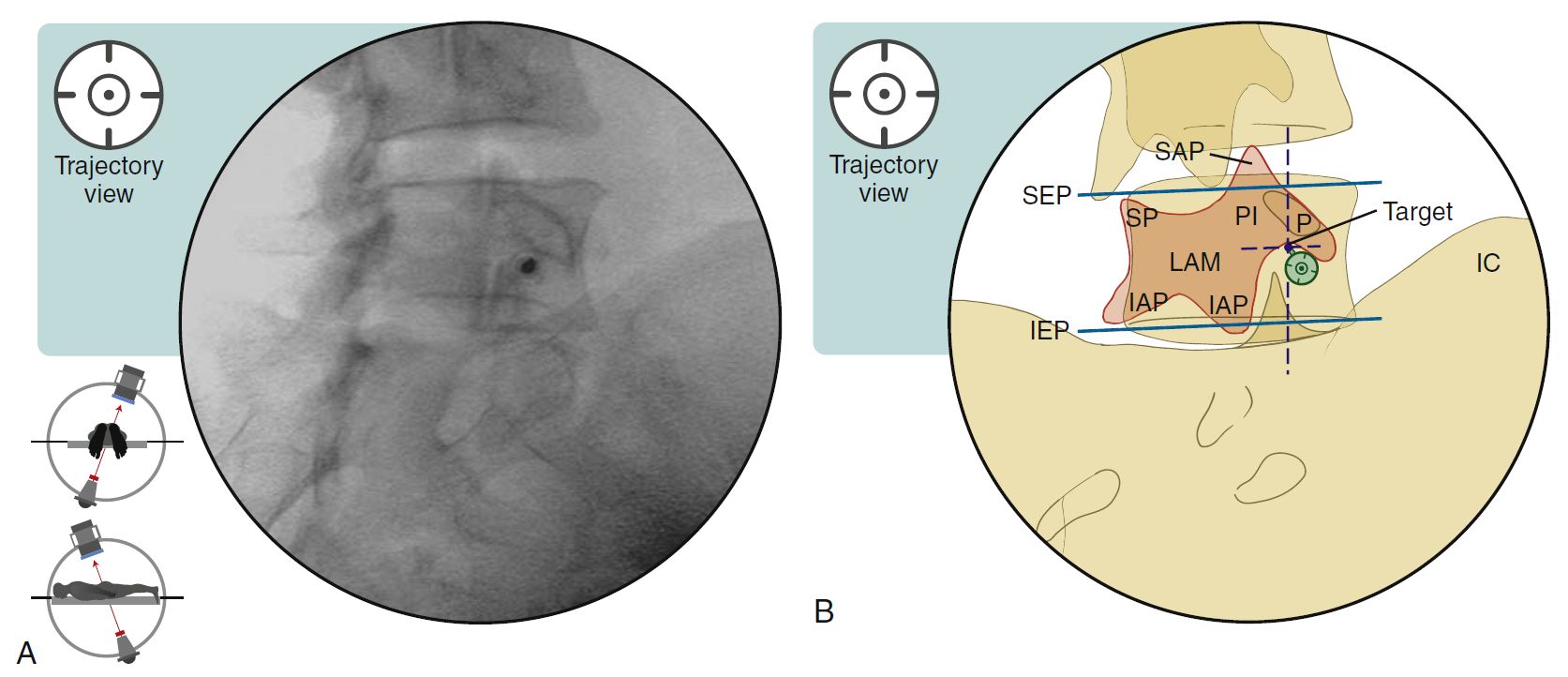SPINE IMAGING-LUMBAR OBLIQUE PROJECTION
SUMMARY
The “Scotty dog” view is used in lumbar oblique projections to assist in lumbar landmark identification:
1. Pedicle (P) — eye
2. Transverse process (TP) — nose
3. Pars interarticularis (PI) — neck
4. Inferior articular process (IAP) — front and rear legs
5. Superior articular process (SAP) — ear
6. Spinous process (SP) — tail
7. Lamina (Lam) — body

Image: Furman, Michael B., and Leland Berkwits. Atlas of Image-Guided Spinal Procedures. Elsevier, Inc, 2017.
Reference(s)
Furman, Michael B., and Leland Berkwits. Atlas of Image-Guided Spinal Procedures. Elsevier, Inc, 2017.
Horowitz AL. MRI Physics for Physicians. Springer Science & Business Media. (1989) ISBN:1468403338.
Mangrum W, Christianson K, Duncan S et-al. Duke Review of MRI Principles. Mosby. (2012) ISBN:1455700843.